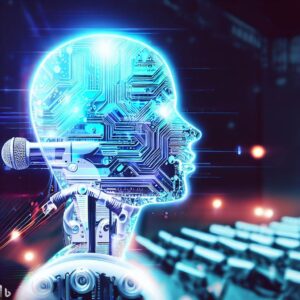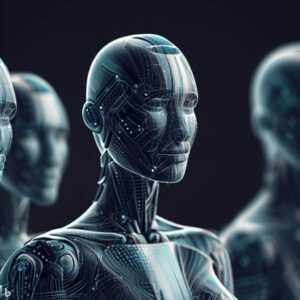As technology continues to advance, businesses are looking for ways to improve customer service while keeping costs low. AI-powered chatbots have become increasingly popular in recent years due to their ability to provide fast, efficient, and personalized support. In this article, we will explore the future of AI-powered chatbots in customer service, including their benefits, limitations, and potential advancements.
- What are AI-powered chatbots and how do they work?
AI-powered chatbots are computer programs designed to simulate conversations with human users. They use natural language processing (NLP) and machine learning algorithms to understand user queries and provide relevant responses. Chatbots can be integrated into various platforms such as websites, social media, and messaging apps, and can be programmed to perform various tasks such as answering common questions, scheduling appointments, and processing orders.
- The benefits of using AI-powered chatbots in customer service
One of the main benefits of AI-powered chatbots is their ability to provide 24/7 support to customers without the need for human intervention. This can help businesses reduce costs associated with staffing and training customer service representatives. Chatbots can also provide fast and efficient support, reducing customer wait times and improving overall satisfaction.
In addition, chatbots can collect data on customer interactions and use this information to improve their performance over time. They can also be programmed to provide personalized support based on user preferences and behavior, creating a more engaging and relevant experience for customers.
- The limitations of AI-powered chatbots
Despite their many benefits, AI-powered chatbots have some limitations. Chatbots can only understand and respond to queries that they have been programmed to recognize, meaning they may struggle with complex or unexpected queries. Additionally, chatbots lack empathy and emotional intelligence, which can lead to frustration and dissatisfaction among users.
Another limitation of chatbots is their inability to handle complex issues that require human intervention. While chatbots can be programmed to escalate issues to human representatives, this can lead to a disjointed and frustrating experience for customers.
- The potential advancements of AI-powered chatbots
Advancements in AI technology are expected to lead to significant improvements in the capabilities of chatbots. For example, chatbots may become better at understanding and responding to complex queries using natural language processing and machine learning algorithms.
Additionally, advancements in emotional AI may enable chatbots to recognize and respond to emotional cues, creating a more empathetic and personalized experience for users. Integration with other AI technologies such as voice assistants and augmented reality may also provide new opportunities for chatbots in customer service.
- The future of AI-powered chatbots in customer service
As businesses continue to prioritize customer experience, AI-powered chatbots are likely to play an increasingly important role in customer service. The global chatbot market is expected to reach $9.4 billion by 2024, driven by the growing demand for personalized and efficient support.
However, as chatbots become more common, businesses will need to ensure that they are properly designed and implemented to avoid frustrating or alienating customers. This includes ensuring that chatbots are programmed to handle a wide range of queries, providing seamless handoffs to human representatives when necessary, and regularly updating and improving their capabilities.
In conclusion, AI-powered chatbots have the potential to revolutionize customer service by providing fast, efficient, and personalized support to users. While they have some limitations, advancements in AI technology are expected to lead to significant improvements in their capabilities, making them an increasingly valuable tool for businesses in the future.


